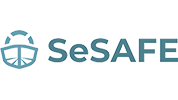There are two main types of SeSAFE modules, generic and fishery-specific. Generic modules are suitable for an individual working anywhere in the fishing and aquaculture industry. Fishery-specific modules have been developed in response to identified hazards and risk in a specific fishery. Additional modules can be developed upon request.
Module selection is a decision that is made by the boat owner or skipper.
Current SeSAFE modules include:
Introductory modules
Module introduction
Fundamentals of safety law
Boat Policies
Safety inductions, drills, and safety management systems
Risk Assessment
Basic risk assessment 1 – Job safety analysis
Basic risk assessment 2 – Hierarchy of controls
Basic risk assessment 3 – Risk matrix
Emergency procedures
Medical emergency
Man overboard
Fire onboard
Abandon ship
Personal safety
Working safely at sea
Personal hygiene
Personal Protective Equipment (PPE)
Manual handling
Hand safety
Noise hazards
Slips, Trips, and Falls
Personal Flotation Devices (PFDs)
Sun protection
Heat related illness
Fatigue awareness and management
Mental health
Boat operations (general)
Electrical safety
Fuelling safety
Confined spaces
Chemical substances and SDS
Gas safety
Stability
Safe anchoring
Safe berthing
Safe transfer of crew, catch, and equipment
Dinghy safety
Safe watchkeeping
Heavy weather
Fishery specific modules (Prawn fisheries) – safety
Catch processing – safety
Hazardous animals
Booms and fishing gear in and out
Hook up response
Winch safety
Try net safety
Fishery specific modules (Prawn fisheries) – practices
Workplace hygiene
Prawn processing and quality
Discharge and waste management
Fishery specific modules (Western rock lobster) – safety
Pot diving safety
Pot preparation and stacking
Pot setting
Pot hauling

